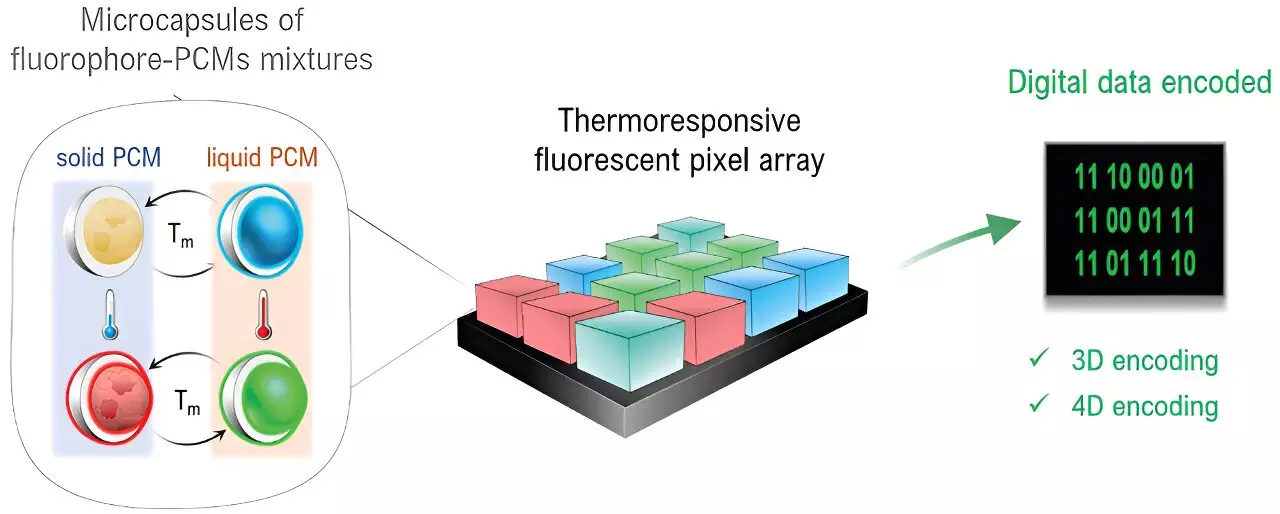Recent advancements in digital encoding technologies have ushered in a transformative approach to data storage, exploiting the unique properties of microcapsules infused with luminescent dyes and materials known for phase changes. The groundbreaking work of a research team led by Dr. Claudio Roscini and Prof. Daniel Ruiz-Molina, alongside their counterparts at the Autonomous University of Barcelona, has laid the groundwork for potentially secure, inexpensive, and easily interpretable data encoding and storage methods. The implications of this research, published in *Advanced Functional Materials*, extend far beyond conventional data management, with potential applications in cybersecurity and anti-counterfeiting measures.
At the core of this innovative system lies a pixel structure that integrates fluorescent dyes with phase change materials such as paraffins. These materials are typically recognized for their thermal properties—absorbing and releasing heat depending on temperature fluctuations. The team ingeniously manipulated these thermal transitions to encode data through two inherent characteristics: the color emitted by the luminescent dyes and the phase state of the paraffins. This dual-layer encoding not only enhances the complexity of data management but also promises a remarkable increase in data density—crucial for applications necessitating large-scale storage solutions.
Advanced Encoding Operations Unveiled
The novelty of the researchers’ approach lies in its capacity to facilitate advanced encoding operations that are both multidimensional and dynamic. Specifically, the system distinguishes between two primary types of encoding: three-dimensional (3D) encryption and four-dimensional (4D) data storage. The 3D component is defined by the spatial arrangement of microcapsules (akin to QR codes) coupled with the emitted colors, while the addition of the fourth dimension is centered around the responsiveness of the phase change material to temperature variations. This intricate multi-layered operation elevates the encoding process, ensuring that data is not merely stored but is interactively accessible based on physical changes.
The implications of this technology are vast, particularly when considering its practical applications in fields requiring high-level security and data integrity, such as anti-counterfeiting and robust cybersecurity frameworks. By enabling a system that can effectively manage and encrypt data at such a sophisticated level, the research team is paving the way for more secure transactions and information storage. Moreover, the fusion of affordability with heightened efficiency positions this technology as a game-changer within the realm of digital data management.
This convergence of chemistry and data science signifies a monumental leap toward tackling some of today’s most pressing challenges in data security and integrity. As the implications of this research continue to unfold, the potential for enhanced encryption systems rooted in innovative material science heralds a future where data management is not only more efficient but also far more secure. The ongoing exploration in this field may very well redefine our approaches to data in an increasingly digital world.


Leave a Reply